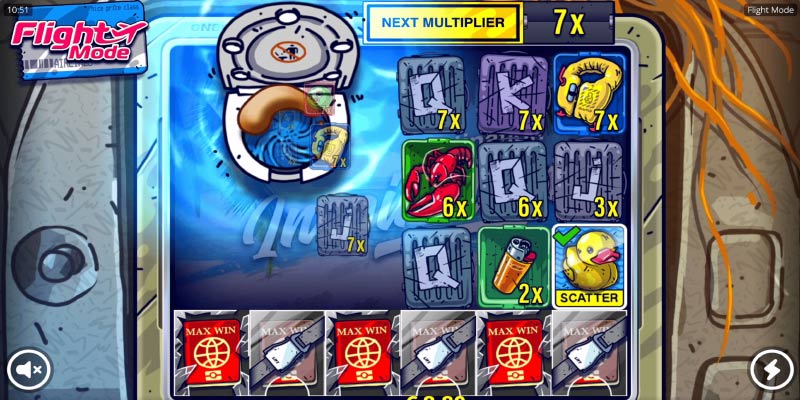
Uncover the Secret Power of Flight Mode Slot
Ever wondered what really happens when you switch on Flight Mode Slot? Beyond just cutting off calls and texts, this underrated feature is a digital lifesaver for travelers. From preserving battery life to boosting focus and safety mid-air, Flight Mode Slot holds hidden advantages that most users overlook. As the skies grow busier with tech-savvy passengers, mastering this simple function becomes more crucial than ever. Whether you’re flying across continents or seeking a break from constant pings, understanding the real magic of Flight Mode Slot will change how you travel—and maybe even how you live nhà cái Uu88.
Use Cases for Flight Mode Slot in Modern Technology
The Flight Mode Slot finds applications beyond air travel, serving various purposes in our everyday lives.
Personal Use Cases
For everyday users, the Flight Mode Slot proves useful in several scenarios:
- During Meetings: Activating Flight Mode can help maintain focus during meetings or presentations, minimizing distractions from notifications.
- Studying or Working: Students and professionals can benefit from a distraction-free environment by using Flight Mode Slot to limit incoming communications.
- Traveling: Besides flights, the Flight Mode Slot can be beneficial in areas with poor reception, preventing the device from searching for signals unnecessarily.
Professional Use Cases
In professional environments, the Flight Mode Slot plays an essential role in maintaining productivity.
- Fieldwork: For workers in remote areas, activating Flight Mode can help prolong battery life while using devices for essential functions offline.
- Emergency Situations: First responders can utilize Flight Mode to ensure devices have sufficient power for emergency communication without unnecessary distractions.
- Research and Development: In controlled environments, researchers may opt for Flight Mode to prevent interference during experiments while using devices for data logging.
Military Use Cases
In military operations, the Flight Mode Slot holds particular significance.
- Operational Security: Keeping devices in Flight Mode helps safeguard communications from interception and maintains operational integrity.
- Remote Operations: Soldiers in the field can use Flight Mode to conserve battery life on devices that may serve critical functions in demanding situations.
- Training Simulations: Military training exercises often take place in simulated environments where the Flight Mode Slot ensures focus and minimizes electronic distractions.
Comparing Different Devices’ Flight Mode Slot Features
While the core functionality of the Flight Mode Slot remains consistent, variations exist across devices in terms of features and customization options. This section analyzes how different platforms handle this essential feature.
Smartphone Comparisons
Smartphones frequently have unique implementations of the Flight Mode Slot.
- iOS Devices:
- iPhones allow customization where users can select which features (Wi-Fi, Bluetooth) to enable even in Flight Mode.
- The seamless integration with the Control Center makes it user-friendly.
- Android Devices:
- Depending on the manufacturer, Android devices may offer additional options, such as toggling Wi-Fi and Bluetooth separately.
- Custom ROMs can provide enhanced features for more advanced users.
- Feature Phones: Even basic models typically include a form of Flight Mode, although with more limited customization options compared to smartphones.
Tablet Comparisons
Tablets share many similarities with smartphones, but there are nuances worth noting.
- iPads:
- Like iPhones, iPads provide robust controls over connectivity, allowing users to enable Wi-Fi while in Flight Mode.
- Android Tablets:
- Similar to their smartphone counterparts, they may vary based on manufacturer customizations and user interfaces.
- Windows Tablets:
- Windows tablets can feature more extensive networking options, allowing fine-grained control of individual network interfaces.
Laptop Comparisons
Laptops present a different context for the Flight Mode Slot, particularly in how users access and configure settings.
- Windows Laptops:
- They typically provide easy access to Flight Mode via the system tray, often featuring a straightforward keyboard shortcut.
- MacBooks:
- macOS includes a streamlined approach to disabling wireless connections through the network settings, albeit lacking a dedicated Flight Mode toggle.
- Chromebooks:
- Chrome OS devices often combine elements of mobile and desktop interfaces, making Flight Mode easy to manage via the Quick Settings menu.
The Future of Flight Mode Slots in Mobile Devices
As technology continues to evolve, so too will the functionality and features associated with the Flight Mode Slot. This final section explores potential advancements and trends that could shape its future.
Integration with Emerging Technologies
With the advent of new technologies, the future of the Flight Mode Slot may see exciting integrations.
- AI and Automation: Integrating AI could lead to smarter Flight Mode activations, automatically toggling based on user habits or location.
- 5G and Beyond: As 5G becomes widespread, regulations might adapt for more flexible use of devices, potentially altering how Flight Mode operates.
- Wearable Technology: Wearables may introduce new dimensions for Flight Mode, enabling seamless transitions without cumbersome manual interventions.
Enhanced User Experience
Future iterations of the Flight Mode Slot could enhance user experience significantly.
- Customization Options: Users may expect greater control over what features remain active during Flight Mode, tailored to their specific needs.
- Cross-Device Synchronization: Improved integration between multiple devices can lead to a more cohesive user experience. For example, turning on Flight Mode on one device could automatically apply it across all connected devices.
- Feedback Mechanisms: Enhanced visual feedback upon activating or deactivating Flight Mode could promote user confidence and satisfaction.
Regulatory Changes
The landscape of regulations surrounding the Flight Mode Slot will likely continue to evolve.
- Relaxed Restrictions: Ongoing studies may yield proof that certain devices can be utilized without interference, leading to relaxed restrictions on in-flight usage.
- International Consistency: As more countries adopt unified aviation guidelines, discrepancies in regulations among nations may diminish.
- Rising Awareness: Increased public awareness of the importance of aviation safety can encourage compliance and foster responsible device usage.
Conclusion
The Flight Mode Slot is a vital feature that balances user connectivity with safety requirements during air travel. Its benefits extend beyond the confines of aviation, offering opportunities for enhanced productivity, battery conservation, and compliance with regulations. As technology progresses, we can anticipate even more innovative uses and adaptations of this feature, ensuring it remains a cornerstone of management and efficiency in our increasingly connected lives.




